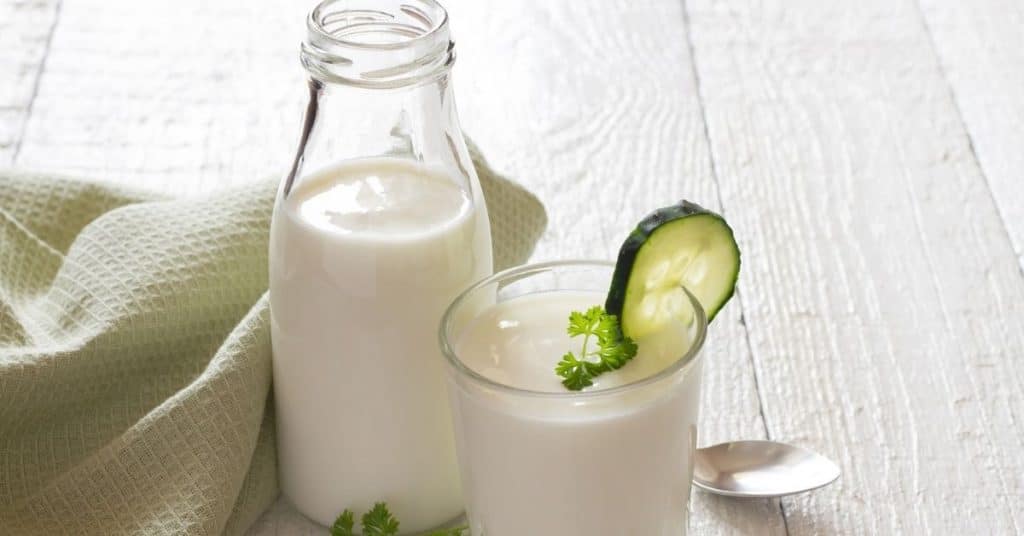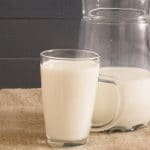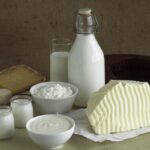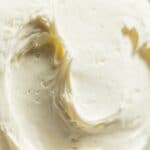In summary: Yes, you can freeze buttermilk for baking or cooking purposes, but it will change its consistency and may need to be whisked after thawing.
Fresh buttermilk is hard to come by in the smaller quantities usually required in baking and cooking recipes. This means that you will often end up with half a container of leftover buttermilk that won’t last long even when refrigerated. So, how can you avoid wasting the leftover buttermilk?
Dairy products don’t usually have a good reputation when it comes to freezing, however, since buttermilk is mostly used for cooking and in baking recipes, it can successfully be stored in the freezer to prolong its shelf life.
Now you can measure out the quantities required in your recipes, freeze them and simply pull out the amount you need without wasting a single drop.
Here is everything you need to know about freezing buttermilk and easy thawing instructions.
Can Buttermilk Be Frozen?
The short answer: Yes!
You can freeze buttermilk, but it will only be suitable for baking or adding to cooked dishes once frozen.
When freezing buttermilk, the consistency will change. It will appear separated once thawed. By whisking the defrosted buttermilk, you can reconstitute its smoother consistency.
It is important to keep buttermilk in airtight packaging in the freezer to prevent it from absorbing odors from surrounding items. The last thing you want is buttermilk with a slightly fishy or oniony flavor.
Buttermilk needs to be frozen while it is still fresh. Placing it in the freezer will not revive old buttermilk, so keep in mind that if it is already off, it is best to throw it away. Buttermilk that has been in the refrigerator for more than 2 weeks should not be frozen.
How To Freeze Buttermilk
Step 1: Quality Check
When you freeze leftover buttermilk, first check that it has not gone bad. If it has a strong sour odor, has mold, or is too chunky to pour, it needs to be discarded.
It is best to portion the buttermilk into the quantity you will be needing once thawed. You can either do this by freezing buttermilk in an ice cube tray or by measuring out ½ to 1 cup of buttermilk into freezer bags.
Step 2: Portion and Pack
Ice cubes
To freeze buttermilk in small portions, pour it into ice cube trays and place it in the freezer until fully frozen. Remove the frozen buttermilk cubes from the ice trays and transfer them into a resealable plastic bag.
Before sealing the freezer bags, press out all the air to avoid freezer burn. Do not leave the buttermilk cubes in the ice cube trays as it will absorb surrounding odors and spoil quickly.
Freezer Bags
Alternatively, measure out the desired quantity and pour the buttermilk into a resealable freezer bag. When freezing buttermilk the liquid expands, so make sure to leave at least an inch of headspace so the bag doesn’t burst.
Press out any excess air and seal the plastic bags. Lie the bags flat on a baking tray.
Place the cookie sheet level in the freezer to allow the buttermilk sachets to freeze evenly. This makes for easy storage, no spillage, and even thawing.
Once frozen solid, you can remove the baking tray and conveniently stack the frozen buttermilk bags to save space.
Step 3: Label
Label the sealed bags with the content and date of freezing. No matter how good your memory is, chances are you will either forget what the product is or for how long it has been in the freezer as the weeks tick by.
Place the labeled bag of cubes, or flat-frozen freezer bags into the freezer until needed.
How To Thaw Frozen Buttermilk
Method 1: Refrigerator
For the best results, defrost frozen buttermilk in the refrigerator. Remove the desired portion from the freezer and place it in the fridge overnight to thaw.
On thawing, the buttermilk would have split and become watery. Mix it well with a whisk to reconstitute a smooth consistency.
Method 2: Water Bath
If you do not have time to wait for the buttermilk to defrost in the refrigerator, you can thaw buttermilk by placing the sealed bag in a bowl of lukewarm water for 20 to 30 minutes to defrost.
Types of Buttermilk
Fresh buttermilk first originated as a by-product after churning butter out of cultured cream. Modern-day buttermilk, however, is a fermented, or cultured milk product. You can even make your own by adding one tablespoon of white vinegar or lemon juice to one cup of milk.
Although some populations enjoy buttermilk as a drink, it is often used in baking and marinating meat due to its acidic quality.
The acid in buttermilk reacts with raising agents in baked products such as sourdough bread and scones to create an airy, well-risen dough. The acid also helps to tenderize meat, retain moisture, and enhance added flavorings when cooking meat.
You can use buttermilk in salad dressings (in a similar way to plain yogurt) as well as in ranch dressing.
Buttermilk may seem like just a sour milk product, but it adds great richness and enhances both sweet and savory cooked, baked, battered- and fried dishes.
See more: How to tell if buttermilk is bad
FAQs
Conclusion
Since freezing buttermilk does not affect its taste or acidic quality, it is the perfect way to preserve this dairy ingredient to save money and prevent food waste.
Thawed buttermilk won’t be suitable to drink, however, you can use it for baked goods, buttermilk pancakes, cooking your favorite fall recipes, and marinating meat. Buttermilk is also a popular ingredient in making batters for deep-fried items. If you run out of this ingredient, you can always find a buttermilk substitute for your recipe.
Just remember, if you want the best out of your frozen buttermilk long-term, it needs to be kept in an air-tight freezer bag or container. Once thawed, give it a good whisk to reconstitute its creamy consistency, and get baking!
Up next:
*image by udra/depositphotos









